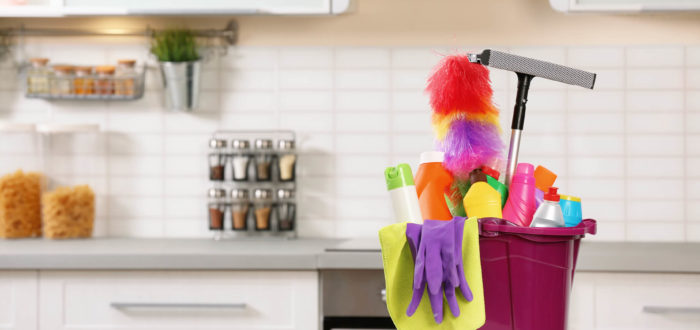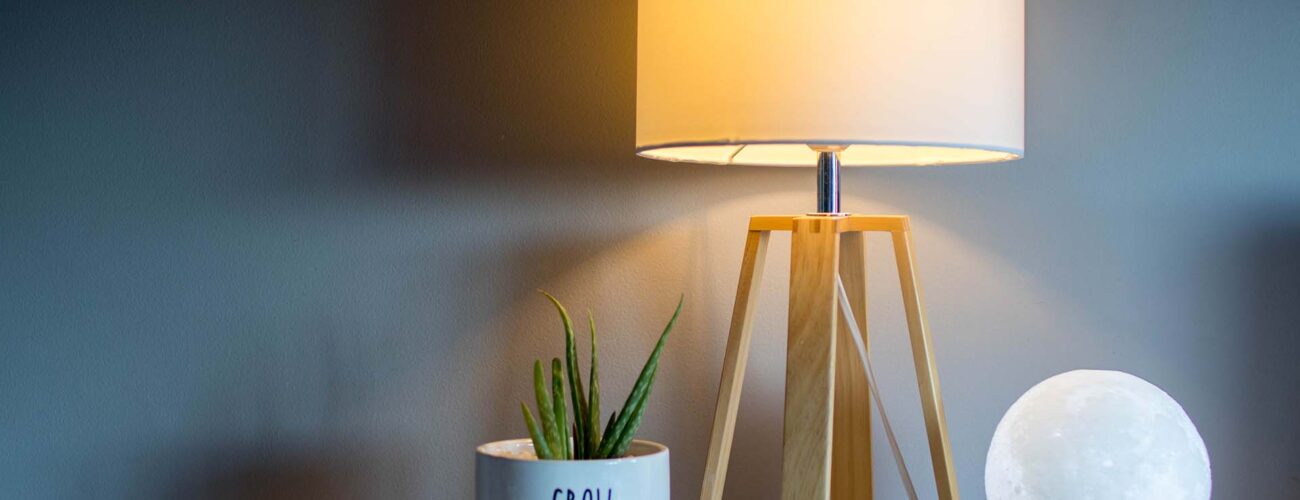

From Bulb to Base: A Comprehensive Guide on How to Pack Lamps for the Move
Posted in How-to on September 13, 2023
Relocating homes often involves safeguarding delicate items, with lamps being notably tricky. Our detailed guide on how to pack lamps for moving cross country provides detailed steps to ensure your luminous beauties remain unscathed during transit. You’ll get to discover the art of wrapping, cushioning, and boxing, ensuring that every part of your lamp, from the fragile bulb to its sturdy base, reaches its new home in perfect condition.
If you’re planning a relocation and want to know how to pack a lamp for moving, the first thing to understand is what kind of lamp we’re talking about. The preparation entails gathering packaging materials, cleaning it, removing the bulb and lampshade, and disassembling it, if necessary. Then, you’ll want to wrap all the parts separately. If you want your lamps to be packed and transported safely, you should hire movers for professional long-distance moving services.
Understanding Your Lamp Type Is the First Step in Preparing It for the Move
Lamps come in various shapes, sizes, and designs. While they might not be relocation essentials, recognizing the specific kind you’re dealing with can significantly impact how you prepare for your cross-country moving experience. By understanding the nuances of each lamp type, you can anticipate the challenges and ensure a stress-free relocation.
Table Lamps – Delicate Items That Require a Lot of Attention When Wrapping for a Move
These are typically compact and designed to sit on desks or bedside tables. They often consist of a base, a stem or body, a bulb, and sometimes a shade. The glass or ceramic bases make these quite fragile items, while the shades can dent or tear if not packed carefully. The challenge lies in the variety of materials they might be made from – each requiring specific packaging tips. It’s not uncommon to find table lamps with delicate decorations or intricate designs, further complicating your packing strategy.
Floor Lamps – The Elongated Structure Might Be Challenging to Wrap
Floor lamps are taller and often more slender than table ones. They can range from simple, streamlined designs to multi-armed, heavy-based styles. The primary concern is their elongated structure, which can be awkward to wrap efficiently. Additionally, they might contain multiple pieces that can be unscrewed or disassembled. Ensuring all the parts are securely packed without bending or warping is essential. The base of many floor lamps can be quite hefty – adequate cushioning at the bottom of the box can prevent damage while in a relocation truck.
Hanging Lamps and Chandeliers – Detaching From Ceilings and Walls as an Extra Step
Hanging lamps and chandeliers can be some of the most challenging light fixtures to pack. Before packaging, they need careful detaching from ceilings or walls. Once removed, the intricate designs and numerous crystal or glass pieces demand meticulous attention. Each dangling part can be a potential breakage point. Additionally, the wiring and chains need to be considered, ensuring they aren’t tangled or damaged. Remember to label every piece if disassembling, so unpacking after the relocation and reinstallation become smooth processes at your new home.
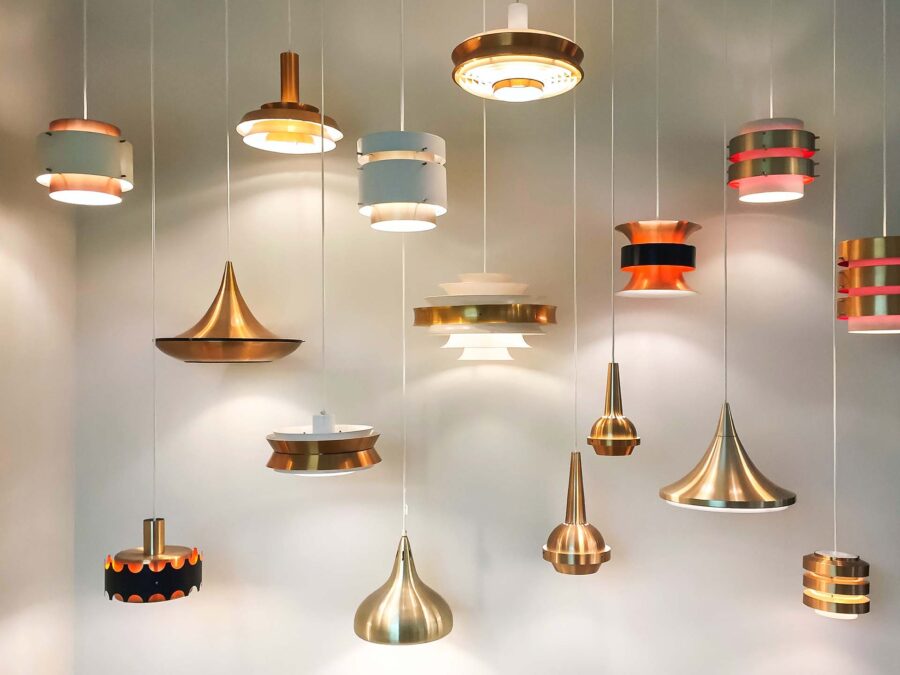
Get All the Necessary Packaging Materials
When packing delicate items, the choice of materials can significantly influence the outcome. Different sizes of boxes are pivotal, ranging from small ones for bulbs to more substantial containers for shades and even double-walled versions that give an added layer of security for fragile pieces.
Bubble wrap offers that much-needed cushion for delicate components, whereas packaging paper wraps them and fills empty spaces to prevent any shifting inside the box. To ensure everything remains tightly packed, robust packaging tape is indispensable. To make the unpacking process more efficient, clear labeling using permanent markers, “Fragile” stickers, and “This Side Up” labels is crucial.
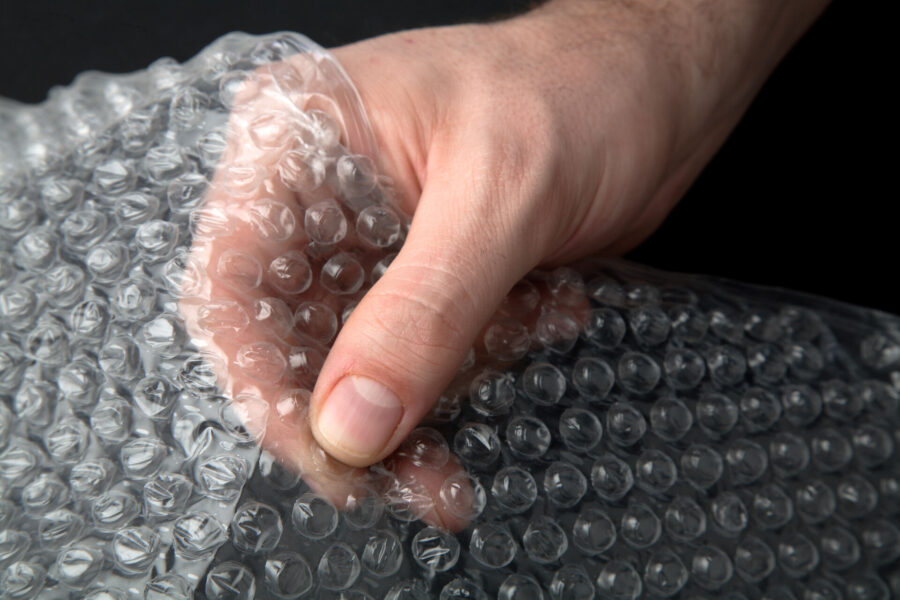
Prepare the Lamp for Packing
Before diving into this process, a few preparatory steps can set the stage for an efficient move. These steps involve cleaning, disassembling, and securing the different parts of the lamp to ensure they arrive in your new home in pristine condition.
Cleaning the Lamp
Cleaning your lamp before packing is more than just a matter of hygiene. It prevents dirt and grime from causing scratches or damage during shipping. Begin by unplugging and placing the lamp on a stable surface. Use a microfiber cloth to wipe down the base and stem. For glass or ceramic parts, a damp cloth with mild detergent can be effective.
However, always avoid using harsh chemicals or abrasive pads that might damage the lamp’s finish. Cleaning the lamp also gives you a chance to inspect it for any existing damage or loose parts that might need attention during the packaging process.
Removing the Bulb and Shade
Before packaging, always remove the bulb and shade. Gently unscrew the bulb and place it in its original box or wrap it in bubble wrap. The lampshade, typically delicate, should be removed by unscrewing or unclipping from the base. Store the shade in a separate box, ensuring it’s surrounded by packaging material to prevent dents or tears.
Disassembling When Necessary
Some lamps, especially floor lamps or intricate table lamps, may need disassembling. If the lamp has multiple parts that screw together, carefully unscrew and separate them. Keep all screws, nuts, and bolts in a labeled bag. When disassembling, it’s wise to take photos to aid in reassembly later. Wrap each part individually in bubble wrap or packaging paper. For larger pieces, consider using moving blankets or pads. Always remember to pack the heaviest parts at the bottom of the box and the lighter ones on top.

How to Pack Lamps – Packing the Different Parts
Packing lamps for a move involves a meticulous process to ensure each of its delicate parts remains intact. Given the diversity in lamp designs and the fragility of their components, understanding how to pack each section is pivotal. Whether it’s the fragile bulb, the often ornate and delicate shade, or the sturdy yet scratch-prone base and body, each has its unique packaging needs.
Wrapping the Bulb Is Essential
The bulb is arguably the most fragile part of a lamp. When packing, first, ensure it’s cooled down if recently used. Carefully unscrew the bulb from its fixture. Take a piece of bubble wrap and envelop the bulb, securing the wrap with tape, ensuring the bulb is entirely covered. Consider placing bulbs in their original boxes, if available, or in a small box with additional padding, ensuring they remain immobile during transit.
How to Pack Lampshades
Lampshades can be deceivingly delicate. For fabric or paper shades, wrap them gently in white paper or a soft cloth to prevent any color transfer. For sturdier shades, bubble wrap can be used. It’s vital to ensure the shade maintains its shape, so avoid putting too much pressure or stacking heavy items on it. Ideally, lampshades should be packed in separate boxes with ample padding at the bottom.
Packing the Base and the Body
The base and body, although often more robust than other parts, still require attention. Wrap the base and body separately in bubble wrap, ensuring all areas are covered. For added protection, use a moving blanket or pad, especially for larger, ornamental bases. Secure the wraps with packing tape. When placing stuff in a box, ensure there’s ample padding at the bottom and fill any void spaces to prevent movement during transit.
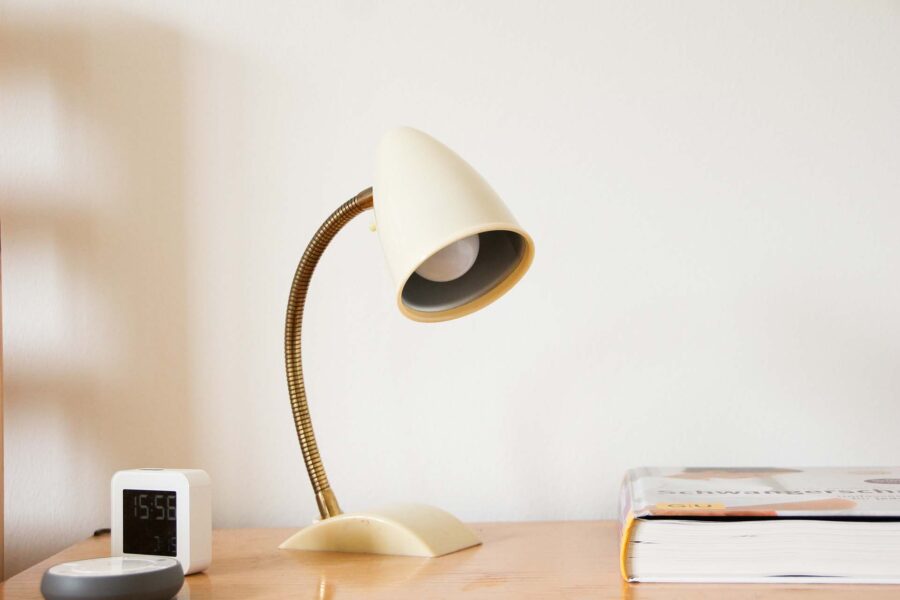
Don’t Forget There Might Be Some Special Considerations
When relocating lamps, the standard packing techniques will often suffice. However, there are instances when special considerations come into play. Certain items, due to their age, value, or unique dimensions, demand an extra level of attention and care during relocation.
How to Move Antique Lamps?
Antique lamps are not just lighting fixtures – they’re pieces of history, often holding immense sentimental and monetary value. Their age makes them particularly vulnerable to damage from handling and environmental factors. Before moving an antique lamp, document its current condition with photographs. This will be essential for insurance purposes and as a reference for reassembly.
Use white gloves when handling to avoid transferring oils or dirt onto the lamp. Wrap each part in acid-free tissue paper, followed by bubble wrap. Avoid using regular newsprint, as the ink can transfer and stain the lamp. When packaging, opt for sturdy, double-walled boxes and ensure ample padding at the bottom. It’s advisable to consult professionals or consider custom crating for extremely valuable pieces.
How to Ship Oversized Lamps?
Oversized or uniquely shaped lamps pose a distinct challenge due to their non-standard dimensions. For these lamps, standard boxes might not be suitable. Begin by disassembling the lamp as much as possible without compromising its integrity. Each disassembled part should be wrapped securely in bubble wrap or moving pads.
For the shipping container, you might need to invest in custom-made boxes or crates that match the lamp’s dimensions. If you’re using a shipping service, ensure that the lamp is insured, and don’t forget to write “fragile” or “handle with care” on the box. Alternatively, consult with relocation companies that have experience with shipping oversized or irregular items. Their expertise can provide tailored solutions, ensuring your lamp reaches its destination unscathed.
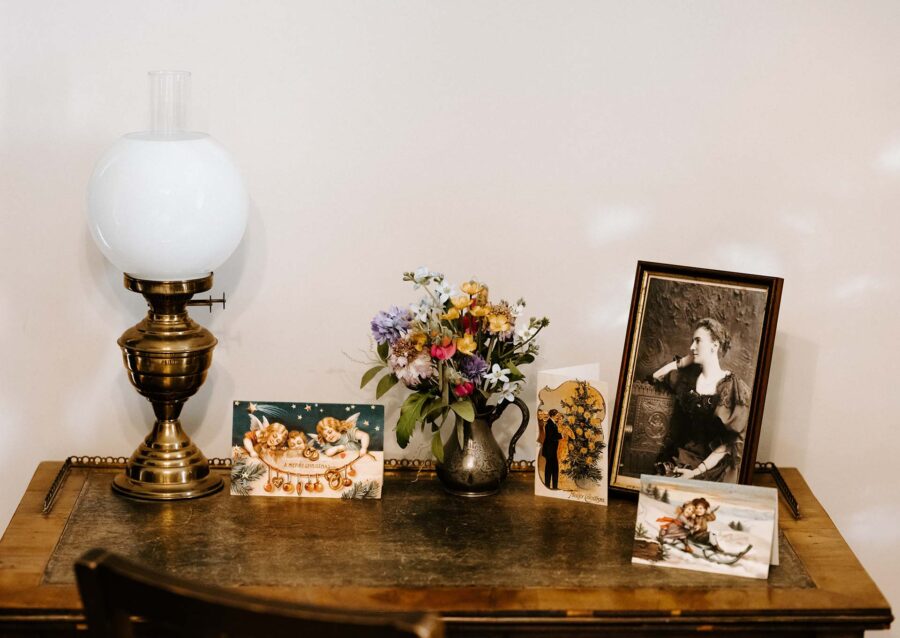
If You Want Your Things to Be Extra Safe, Hire Long-Distance Movers to Pack Them
Relocating to a new state can be a daunting process. The intricacies of packing, especially for delicate or large items, require a skill set that not everyone possesses. For those looking to ensure the utmost safety of all the belongings that will be shipped, hiring cross-country movers and booking packing assistance can be a game-changer. Here are some of the top reasons to relocate with movers and their expert cross-country moving services:
- Professional movers are trained in best packing practices and techniques, ensuring each item is adequately protected.
- Their experience allows them to pack faster, saving you time and reducing the disruption to your routine.
- Movers come equipped with the right tools and materials tailored for specific items, from furniture to fragile pieces.
- Most reputable relocation companies offer insurance options, meaning you are covered in case of unforeseen damages.
- Knowing professionals are handling your possessions allows you to focus on other aspects of the move, alleviating relocation stress.
- Movers are responsible for ensuring that your belongings reach their destination in the same condition they were packed.
Hire Cross Country Movers – Your Lamps Will Arrive Safely at Your Destination
When it comes to relocating, especially over vast distances, the safety of your possessions is paramount. This is where the expertise of a company like Cross Country Movers comes into play. Known for our dedication to ensuring each item is handled with the utmost care, our renowned company has been a trusted name in the relocation industry for years.
Cross Country Movers stands out with our specialized packing techniques, catering to delicate items. Our team is extensively trained and equipped with the best packaging materials, ensuring that your prized possessions, no matter how fragile, arrive in your new state in pristine condition. Beyond just packaging, our transportation methods prioritize safety, mitigating any risks that come with long-distance relocations. Contact us to get a free quote for your upcoming relocation!
FAQ
Why Is It Important to Remove the Bulb Before Packing a Lamp?
Removing the bulb is crucial because it is one of the most fragile components. Leaving it attached increases the risk of breakage, which could not only damage the bulb but also produce sharp fragments that may harm other parts or nearby items.
Can I Use Regular Boxes for Packing Lamps, or Should I Look for Specialized Boxes?
While regular boxes can be used, it’s advisable to opt for specialized or double-walled boxes for added protection. A lamp, being fragile, benefits from the additional cushioning and sturdiness these boxes provide.
How Do I Ensure That the Lampshade Retains Its Shape During the Move?
To maintain the shape of your lampshade, first, wrap it in soft, white packaging paper to prevent color transfer. Avoid using excessive pressure. Place the shade in a separate box, ensuring it’s neither too tight nor too spacious. Fill voids with crumpled paper to prevent the shade from shifting inside the box.
Is It Safe to Pack Multiple Lamp Components in One Box?
Yes, but with precautions. Ensure each component is individually wrapped to prevent scratching or damage. Using dividers or additional padding between parts can minimize movement and potential harm. Bulbs, given their fragility, should be packed separately.
How Do I Pack Oddly Shaped or Oversized Lamps?
For unusually shaped or oversized ones, start by disassembling them as much as possible. Wrap each part in bubble wrap or blankets. If standard boxes aren’t suitable, consider custom-made crates or boxes tailored to the item’s dimensions.
What Precautions Should Be Taken When Packing Antique or Delicate Lamps?
Antique lamps require extra care due to their age and potential value. Handle them with gloves to avoid transferring oils or dirt. Wrap parts in acid-free tissue paper followed by bubble wrap. Using double-walled boxes provides added security. For highly valuable lamps, consider custom crating or professional wrapping services.
Are There Specific Packing Materials That Work Best for Protecting Lamps?
Bubble wrap offers excellent cushioning for most lamp parts. Acid-free tissue paper is ideal for antiques to prevent staining. Double-walled boxes or specialized lamp boxes provide the sturdiness required for transportation. Packing peanuts or crumpled paper can fill void spaces, preventing movement inside the box. Always ensure the tape used is strong and durable to keep boxes securely sealed.
